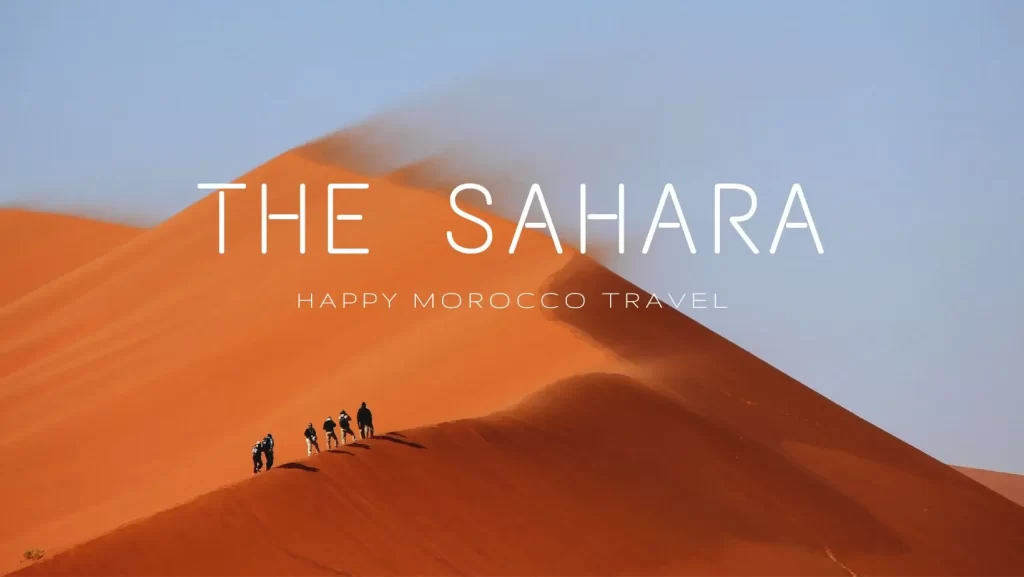crossroads desert safari desert tours happy marrakech tour how to visit morocco in sahara trekking Marrakech vacation Merzouga Sahara desert Morocco Sahara Desert visitmorocco where is sahara desert
| Heading | Description |
|---|---|
| 1. Introduction | Introduction to the Sahara |
| 2. Geographical Features | Overview of the Sahara’s geography |
| 3. Climate and Weather | Understanding the climate and weather patterns in the Sahara |
| 4. Flora and Fauna | Exploring the unique plant and animal life of the Sahara |
| 5. Human History | Tracing the historical significance of the Sahara |
| 6. Indigenous Cultures | Learning about the indigenous cultures and tribes of the Sahara |
| 7. Economy and Resources | Examining the economic aspects and resources of the Sahara |
| 8. Tourism and Travel | Discovering the tourism potential and travel experiences in the Sahara |
| 9. Environmental Challenges | Addressing the environmental challenges faced by the Sahara |
| 10. Conservation Efforts | Highlighting the conservation initiatives in the Sahara |
| 11. Sahara in Popular Culture | Exploring the Sahara’s presence in literature, movies, and art |
| 12. Sahara and Climate Change | Understanding the impact of climate change on the Sahara |
| 13. Sahara as a Research Site | Discussing the scientific research conducted in the Sahara |
| 14. Sahara’s Influence on Global Climate | Examining how the Sahara affects global climate patterns |
| 15. Sahara’s Natural Wonders | Showcasing the natural wonders found within the Sahara |
| 16. Sahara and Trade Routes | Tracing the historical trade routes passing through the Sahara |
| 17. Sahara’s Mysteries | Delving into the mysteries and legends associated with the Sahara |
| 18. Sahara in Art and Literature | Analyzing the artistic and literary representations of the Sahara |
| 19. Sahara’s Impact on African Culture | Exploring the Sahara’s influence on African cultures |
| 20. Sahara’s Future Prospects | Speculating on the future prospects and challenges for the Sahara |
| 21. Frequently Asked Questions (FAQs) | Providing answers to common questions about the Sahara |
| 22. Conclusion | Wrapping up the article on the Sahara |
Table of contents
- 1. Introduction
- 2. Geographical Features
- 3. Climate and Weather
- 4. Flora and Fauna
- 5. Human History
- 6. Indigenous Cultures
- 7. Economy and Resources
- 8. Tourism and Travel
- 9. Environmental Challenges
- 10. Conservation Efforts
- 11. The Sahara in Popular Culture
- 12. The Sahara and Climate Change
- 13. Sahara as a Research Site
- 14. Sahara’s Influence on Global Climate
- 15. Sahara’s Natural Wonders
- 16. Sahara and Trade Routes
- 17. Sahara’s Mysteries
- 18. Sahara in Art and Literature
- 19. Sahara’s Impact on African Culture
- 20. Sahara’s Future Prospects
- 22. Conclusion
1. Introduction
The Sahara is a vast desert located in North Africa and is the largest hot desert in the world. It spans across multiple countries and covers an area of approximately 9.2 million square kilometres.
2. Geographical Features
The Sahara is characterized by its diverse geographical features, including sand dunes, rocky plateaus, mountains, and oasis. These features contribute to the unique landscape of the desert.
3. Climate and Weather
The Sahara experiences an extreme desert climate with high temperatures during the day and significant temperature drops at night. The lack of rainfall and aridity are defining features of the Sahara’s weather patterns.
4. Flora and Fauna
The Sahara has a rich historical past, with evidence of human habitation dating back thousands of years. Ancient civilizations, such as the Egyptians and Carthaginians, left their mark on the region through archaeological sites and artifacts.
5. Human History
The Sahara has a rich historical past, with evidence of human habitation dating back thousands of years. Ancient civilizations, such as the Amazigh, the Egyptians and Carthaginians, left their mark on the region through archaeological sites and artifacts.
6. Indigenous Cultures
The Sahara is home to numerous indigenous cultures and tribes, each with its own distinct traditions, languages, and way of life. These communities have developed unique strategies for survival in the desert environment.
7. Economy and Resources
The Sahara has valuable resources, including oil, natural gas, minerals, and renewable energy potential. These resources play a crucial role in the economic development of the countries within the Sahara region.
8. Tourism and Travel
Tourism in the Sahara has gained popularity in recent years, attracting adventurous travellers who seek unique experiences in the desert. From camel treks to stargazing, the Sahara offers a range of activities for visitors.
9. Environmental Challenges
The Sahara faces significant environmental challenges, including desertification, droughts, and sandstorms. These challenges impact both the natural ecosystems and the livelihoods of the people living in the region.
10. Conservation Efforts
Various conservation efforts are underway to protect the Sahara’s delicate ecosystem and preserve its biodiversity. These initiatives focus on sustainable practices, reforestation, and raising awareness about the importance of conservation.
11. The Sahara in Popular Culture
The Sahara has captured the imagination of artists, writers, and filmmakers, leading to its portrayal in popular culture. From epic adventure movies to renowned novels, the Sahara’s mystique has become a recurring theme.
12. The Sahara and Climate Change
Climate change poses significant threats to the Sahara, with rising temperatures and shifting rainfall patterns affecting the desert’s ecosystem. Understanding these changes is crucial for developing strategies to mitigate the impacts.
13. Sahara as a Research Site
The Sahara’s unique environment and geological features make it an ideal site for scientific research. Scientists study various aspects, including geology, climate, ecology, and archaeology, to expand our knowledge of the desert.
14. Sahara’s Influence on Global Climate
The Sahara plays a vital role in influencing global climate patterns, particularly through its impact on wind circulation and the formation of the Atlantic hurricanes. Changes in the Sahara can have far-reaching consequences.
15. Sahara’s Natural Wonders
Within the vast expanse of the Sahara, several natural wonders can be found. From the towering sand dunes of the Erg Chebbi to the stunning landscapes of the Tassili n’Ajjer, these wonders showcase the desert’s beauty.
16. Sahara and Trade Routes
Throughout history, the Sahara has been a crucial crossroad for trade routes connecting Africa, Europe, and the Middle East. These routes facilitated the exchange of goods, ideas, and cultural influences.
17. Sahara’s Mysteries
The Sahara has captivated explorers and researchers with its many mysteries. From ancient rock art to lost cities buried beneath the sand, the desert holds secrets waiting to be discovered.
18. Sahara in Art and Literature
Artists and writers have been inspired by the Sahara’s awe-inspiring landscapes, vibrant cultures, and intriguing history. Paintings, poems, and novels have immortalized the spirit of the desert in various forms of art.
19. Sahara’s Impact on African Culture
The Sahara’s influence extends beyond its physical boundaries and has shaped the cultures of the surrounding regions. From music and storytelling to traditional practices, the Sahara has left an indelible mark on African culture.
20. Sahara’s Future Prospects
As the world faces environmental challenges and increasing demands for resources, the Sahara’s future prospects are subject to change. Sustainable development, conservation efforts, and innovative solutions will shape the desert’s trajectory.
Frequently Asked Questions (FAQs)
Q: Where is the Sahara located?
A: The Sahara is located in North Africa, spanning across several countries including Morocco, Chad, Egypt, Libya, Mali, Mauritania, Algeria, Niger, Sudan, and Tunisia.
Q: How large is the Sahara Desert?
A: The Sahara covers approximately 9.2 million square kilometers, making it the largest hot desert in the world.
Q: What is the climate like in the Sahara?
A: The Sahara has an extreme desert climate characterized by high temperatures during the day and significant temperature drops at night. It is also known for its aridity and lack of rainfall.
Q: What kind of plants and animals can be found in the Sahara?
A: The Sahara is home to a diverse range of flora and fauna adapted to survive in the desert environment. Examples include date palms, acacia trees, camels, fennec foxes, and desert hedgehogs.
Q: What are some of the economic resources in the Sahara?
A: The Sahara has valuable resources, including oil, natural gas, minerals (such as phosphates and iron ore), and renewable energy potential (such as solar and wind energy).
Q: Can you visit the Sahara as a tourist?
A: Yes, the Sahara is a popular tourist destination, offering various experiences such as camel treks, desert camping, sandboarding, and stargazing.
Q: What are the environmental challenges faced by the Sahara?
A: The Sahara faces environmental challenges such as desertification, droughts, and sandstorms, which impact both the natural ecosystems and the livelihoods of the people in the region.
Q: Are there any conservation efforts focused on the Sahara?
A: Yes, there are ongoing conservation efforts aimed at protecting the Sahara’s ecosystem and biodiversity. These initiatives include sustainable practices, reforestation projects, and raising awareness.
Q: Has the Sahara been portrayed in popular culture?
A: Yes, the Sahara has been depicted in various forms of popular culture, including movies, novels, and artwork. It has become synonymous with adventure, mystery, and exploration.
Q: How does climate change affect the Sahara?
A: Climate change has implications for the Sahara, including rising temperatures, shifting rainfall patterns, and potential impacts on the desert’s ecosystems and communities.
22. Conclusion of The Sahara: Unveiling the Mystique of the World’s Largest Desert
The Sahara is a remarkable desert with a rich history, unique biodiversity, and significant cultural and economic importance. Its vast landscapes, extreme conditions, and intriguing mysteries continue to captivate the imagination of people around the world.




